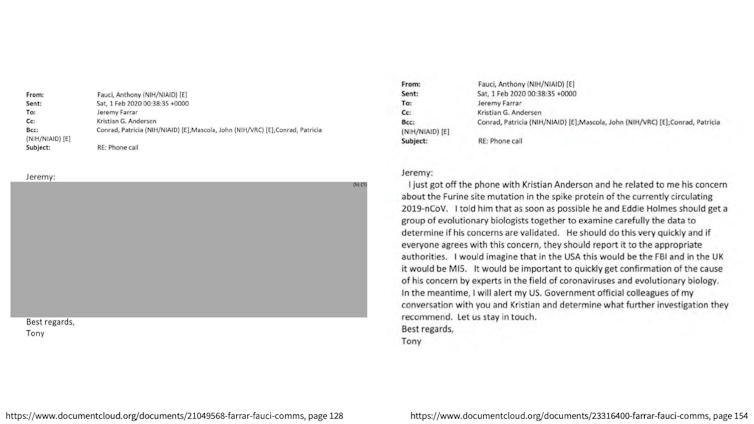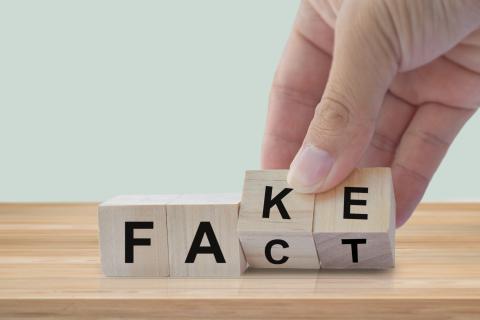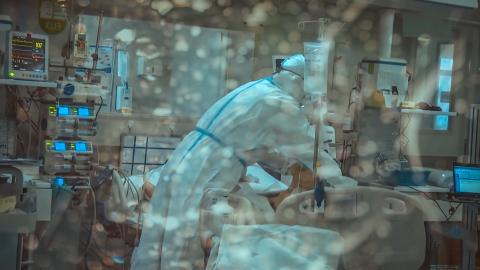
The Origin of Covid: the eventful history of a major scientific paper
Few scientific papers have been as much the subject of fantasy and speculation as Proximal Origin of SARS-CoV-2, published three years ago in Nature Medicine.
A few days before its publication, on March 11, 2020, the World Health Organization announced the pandemic status of the virus, as many countries experienced their first wave of infections and went into lock-down.
Co-authored by Kristian G. Andersen, Andrew Rambaut, W. Ian Lipkin, Edward C. Holmes, and Robert F. Garry, five experts in viral emergence, the article Proximal Origin of SARS-CoV-2 presented the results of investigations into what may be the recent origin of SARS-CoV-2, the virus causing Covid-19.
The authors' conclusion, stated in the opening paragraphs of the text, is clear: their analyses "clearly show that SARS-CoV-2 is not a laboratory construct or a deliberately manipulated virus. The reputation of the authors, the reputation of the journal, and the seemingly unambiguous nature of the conclusion make this article a reference of choice to counter speculations about an artificial origin of the virus.
The revelation of the first doubts
At the beginning of June 2021, more than 3,200 pages of emails from Anthony Fauci, the White House science advisor, were made public. Several journalists from the Washington Post were able to obtain these emails thanks to the American law of access to administrative documents (FOIA).
These emails were largely redacted by the NIH, the US biomedical agency, and between the grey rectangles of censorship, among the last pages of the voluminous file, we discover that on January 31, 2020, Kristian Andersen announced to Anthony Fauci that he, Robert ("Bob") Garry and Edward ("Eddie") Holmes found the "SARS-CoV-2 genome to be incompatible with the theory of evolution" - in other words, possibly of artificial origin. But, he added, "further analysis is needed, and these views may change.
The emails also reveal that these scientists met the next day, February 1, 2020, in a summit teleconference. Other participants included: Andrew Rambaut, European virologists, but also Jeremy Farrar, then head of the Wellcome Trust, a British foundation funding biomedical research.
The publication of the e-mails caused a sudden rise in tension on the social networks. Violently attacked, Kristian Andersen deleted some tweets and then closed his Twitter account, and tried to explain himself in the media. The revelation via what are now called "Fauci's emails" of discussions between scientists on a possible artificial origin of SARS-CoV-2 gives the impression that the events were intended to remain secret, and were only revealed thanks to the law of access to administrative documents.
However, the reality was quite different. Kristian Andersen, for example, had already publicly discussed his initial suspicions about the origin of the virus.

Tweet by Kristian Andersen, April 2, 2021 (before the publication of the "Fauci emails").
But above all, on July 22, 2021, Jeremy Farrar's memoirs, co-written with journalist Anjana Ahuja, were published under the title of Spike. The first three chapters are devoted to the questioning of several researchers on the origin of the virus, as well as to the preparation, the course and the aftermath of the now famous meeting of February 1, 2020.
Finished writing in the spring of 2021, these chapters show the researchers' willingness to publicly reveal their initial suspicions. But the chronology is unfortunate. The "Fauci emails," published only seven weeks before Spike's release, have already imprinted on public opinion the idea of secret consultations revealed by chance.
Conspiracy theories thrive on secrecy, and the numerous redactions of the "Fauci emails" provide fertile ground. The reversal of some of the authors of Proximal Origin of SARS-CoV-2 is intriguing: how could they change their minds so quickly, and publish a paper claiming to have found no evidence of an artificial origin of SARS-CoV-2 only a few weeks after they themselves suspected that the virus might be a human construct?
Kristian Andersen may explain that he and his colleagues followed a scientific approach, which Proximal Origin of SARS-CoV-2 details - we will come back to this - but some people are not convinced.
The American biomedical agency, the NIH, has indirectly financed research at the Wuhan Institute of Virology, through the NGO EcoHealth Alliance. We think that Anthony Fauci himself, anxious to preserve the interests of the agency he works for, could have tried to cover up the origin of the laboratory. To do so, he would have instructed researchers who had questions to write an article to nip any discussion in the bud.
The accusation is serious for Anthony Fauci but also for the authors of the article, who would have lacked scientific integrity by writing and promoting an article they did not believe.
The story, however, is based only on speculation about the content of the text hidden under the grey rectangles of the censors. Moreover, the argument is intriguing: why would Anthony Fauci have forced researchers who suspected a laboratory origin to write a paper that went against their conviction, and not have simply asked other scientists?
Moreover, why would the researchers have accepted this masquerade? Moreover, they do not all work in the United States, and are therefore not all dependent on the NIH. Moreover, among them, Andrew Rambaut never believed in an artificial origin; Anthony Fauci did not need to change his mind.
None of this makes much sense, and for one simple reason: the story was false.
The conspiracy scenario disproved
At the end of November 2022, the decrypted versions of the e-mails were finally published thanks to the persistence of Jimmy Tobias, an independent journalist. In these documents, we read that rather than stifling the discussion, Anthony Fauci had encouraged it. He had asked for other experts to be consulted, and announced that he was alerting colleagues in the US government.

We also read that within the group of researchers who participated in the February 1, 2020 teleconference, opinions differed on the appropriateness of publishing an article to report on their analyses. Some even criticized the future authors of Proximal Origin of SARS-CoV-2 for risking conspiracy theories about the origin of the virus with their article.
Moreover, according to the authors' statements, there is no trace of direct intervention by Anthony Fauci on the content of the document that would become Proximal Origin of SARS-CoV-2.
If not under the pressure of Anthony Fauci, what made the authors of Proximal Origin of SARS-CoV-2 who had initially believed in an artificial origin of the virus change their minds? To understand this, we have to go back to the original reasons for their doubts.
Nothing more than science "in the making”
After the publication of the SARS-CoV-2 genome, as well as that of its closest known cousin at the time, RaTG13 (a bat coronavirus), two features of SARS-CoV-2 had initially made Kristian Andersen and his colleagues suspect an artificial origin of the virus.
The first was its Receptor Binding Domain (RBD), which is different from that of SARS-CoV, the virus that caused the SARS epidemic in 2002-2004.
But a coronavirus infecting pangolins has an RBD very close to that of SARS-CoV-2 (the rest of the genome is more distant, which has caused confusion). Thus, the RBD that at first seemed odd and therefore suspicious actually existed naturally.
The second point that caught the researchers' attention was the "furin cleavage site" (FCS). The Spike protein of the virus, initially in one piece, must be cut ("cleaved") to allow the virus to enter the cells of its host. FCS allows this cleavage to be accomplished by furin.
SARS-CoV-2 is the only SARS-like coronavirus known to date to possess such a site. Its presence may suggest a laboratory manipulation.
However, many other coronaviruses have a FCS. Such a site has evolved naturally several times already.
Furthermore, no virus known to date could have served as a carrier for such an insertion and resulted in the creation of SARS-CoV-2 in the laboratory. RaTG13 is far too distant from SARS-CoV-2 to be a progenitor, and the Wuhan Institute of Virology has indicated that RaTG13 is the closest virus to SARS-CoV-2 in its possession. For the hypothesis of an artificial insertion of FCS to hold, we must assume that the Wuhan researchers are lying to us and hiding viruses.
Readers are free to judge for themselves the relevance of these arguments, put forward in Proximal Origin of SARS-CoV-2. Because contrary to the way it was presented by the conspiracy theorists, Proximal Origin of SARS-CoV-2 did not have the power to censor any discussion of the origin of the virus. It is just a scientific article, which presented what its authors thought about the origin of SARS-CoV-2, at the time of its publication. Nothing more, nothing less.
Florence Débarre, CNRS Research Directore, researcher in evolutionary biology, Sorbonne University
This article has been republished from The Conversation under a Creative Commons license. Read the original article in French.
![]()


